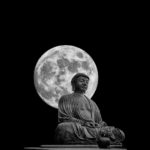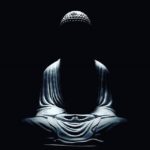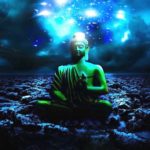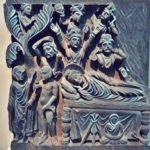Recent Comments
- Vajragoni on Audiobook is released
- Scott on Audiobook is released
- Vajragoni on The Tathāgata’s Dharma-body
- Slovene Adept on The Tathāgata’s Dharma-body
- Vajragoni on The Tathāgata’s Dharma-body
-
Recent Posts
Categories
- A Darkness Visible
- A Docetic Assessment
- A Mystical Odyssey through the Sagathakam
- Akṣayamatinirdeśasūtra
- Akṣhobhya’s Pure Land
- Ālaya-vijñāna
- Anūnatvāpūrṇatvanirdeśaparivarta
- Ariyapariyesanā Sutta
- Ascending the Noble Mountain of Primordial Perfection
- Asceticism
- Ashtavakra Gita in Light of the Unborn
- Audiobook
- Bankei Zen
- Beyond the Ascent
- Beyond the Rainbow Body
- Black Dragon Eye Mandala
- Bodhicitta
- Buddhism’s Black Holes
- Buddhist Anecdotes
- Buddhist Hells
- Buddhist Meditations on the Tarot
- Chuang-Tzu
- Contemporary Musings
- Ḍākiṇī
- Dāsbodh
- Dharmakaya Abbey
- Dharmakaya Stick
- Divine Revelation
- Doctrine of the Void
- Dust Contemplation
- Ekacitta: Advanced Studies in Dark Zen
- Entry into the Dharmadhātu
- Eremitical Dhyani Meditations
- Exploring the Book of Revelation
- Gnostikos
- Hsin Hsin Ming
- Journey to the Center of the Mind
- Karma and Rebirth
- Korean Sŏn
- Kulayarāja Tantra—The Motherly Buddha
- Little Office of Our Lady of the Void
- LSD and Psychedelic Buddhism
- Māṇḍukya Kārikā
- Mañjuśrī Teaches Prajñāpāramitā
- Māra and Satan
- Meister Eckhart
- Mud and Water: Bassui Zen
- Mystagogia
- Nirvana
- Notes from the Iron Stupa
- Nothingness in Nāgārjuna and John of the Cross
- Obscure Religious Cults
- Preparation for the Afterlife
- Primordial Qigong
- Reflections on the Saṃdhinirmocana Sūtra
- Spirituality
- Springtime with Tozen
- Terma: A Mind Film by Vajragoni
- The Afterglow
- The Awakening of Faith
- The Bhagavad Gita
- The Book of Bodhi
- The Cloud of Unknowing in Light of the Unborn
- The Diamond Sutra
- The Divine Ātman
- The Divine Liturgy of Vajrasattva
- The Doctrine of Awakening
- The Dragon Mind of Zen Tarot
- The Elucidation of Consciousness
- The Experience of No-Self
- The Great Perfection of the Unborn Mind: A Book of Privy Counseling
- The Heart Sutra
- The Hermit's Den
- The Khaggavisāṇa Sutta: A Rhinoceros Horn
- The Lankavatara Sutra
- The Lankavatarian Book of the Dead
- The Lion's Roar of Queen Śrīmālā
- The Lotus Sutra
- The Mahāparinirvāṇasūtra
- The Naga Chronicles
- The Platform Sutra
- The Ratnagotravibhāgaśāstra
- The School of the Spirit
- The Secret Golden Light of the Unborn
- The Soul
- The Śūrańgama Sūtra
- The Sutra of Primordial Enlightenment
- The Tathāgatagarbhatārā Tantra
- The Udāna
- The Unborn Mind Mythos
- The Unborn Mind Sessions
- The Unborn Odyssey: A Novel
- The Vajrasamādhi Sutra
- The Vimalakirti Sutra
- The Yogasūtras of Patañjali
- The Zen Teaching of Bodhidharma
- The Zen Teaching of Instantaneous Awakening
- The Zen Teachings of Huang Po
- Theologia Mystica
- Tozen Teaching
- Tsung-mi: An Intimate Study
- Unborn I Ching
- Unborn Light Reiki
- Uncategorized
- Vasubandhu and the Absolute
- Wisdom from the Masters
- Wordsworth and Zen
- Yoga of the Manomayakāya
- Zen
- Zuowang
Archives
- February 2024
- January 2024
- December 2023
- November 2023
- October 2023
- September 2023
- August 2023
- July 2023
- June 2023
- May 2023
- April 2023
- March 2023
- February 2023
- January 2023
- December 2022
- November 2022
- October 2022
- September 2022
- August 2022
- May 2022
- April 2022
- March 2022
- February 2022
- January 2022
- December 2021
- November 2021
- October 2021
- September 2021
- August 2021
- May 2021
- April 2021
- March 2021
- February 2021
- January 2021
- December 2020
- November 2020
- October 2020
- September 2020
- August 2020
- May 2020
- April 2020
- March 2020
- February 2020
- January 2020
- December 2019
- November 2019
- October 2019
- September 2019
- August 2019
- June 2019
- February 2019
- January 2019
- December 2018
- October 2018
- August 2018
- April 2018
- March 2018
- February 2018
- January 2018
- December 2017
- November 2017
- October 2017
- September 2017
- August 2017
- May 2017
- April 2017
- March 2017
- February 2017
- January 2017
- December 2016
- November 2016
- October 2016
- September 2016
- August 2016
- July 2016
- May 2016
- April 2016
- March 2016
- February 2016
- January 2016
- December 2015
- November 2015
- October 2015
- September 2015
- August 2015
- July 2015
- June 2015
- May 2015
- April 2015
- March 2015
- February 2015
- January 2015
- December 2014
- November 2014
- October 2014
- September 2014
- August 2014
- May 2014
- April 2014
- March 2014
- February 2014
- January 2014
- December 2013
- November 2013
- October 2013
- September 2013
- August 2013
- May 2013
- April 2013
- March 2013
- February 2013
- January 2013
- December 2012
- November 2012
- October 2012
- September 2012
- August 2012
- May 2012
- April 2012
- March 2012
- February 2012
- January 2012
- December 2011
- November 2011
- October 2011
Meta
Tag Archives: Icchantikas
The Moon Parable

The Mahāparinirvāṇasūtra makes excellent use of parables in order to construct analogies as to the True Buddha Nature. The Moon Parable stands out in analogizing how the cycles of the Moon reflect the perennial nature of the Tathagata.
Posted in The Mahāparinirvāṇasūtra
Tagged body of the Tathagata, Dharmatic Light, eclipse, Icchantikas, Karma, moon, Shining Ones
Leave a comment
Modes of Liberation

At the beginning of Part II of Chapter Seven a discussion arises as to the exact nature of “the hidden treasury”. The Real Treasury of the Tathagatas was covered in Chapter Three with the quote from Zen Master Keizan’s Transmission of Light: “I have the treasury of the eye of truth, the ineffable mind of nirvana.” The Blessed One explains to Kāśyapa the inner-core of this realization:
Dharmatā

It may be of interest to some of the readership as to what is the method employed when undertaking the exegesis of the Sutras in these Dharma-series. Firstly, the given Chapters are diligently read and digested in terms of its main import which is then followed by reading the different translations side-by-side, accompanied with some research on key elements. Afterwards I enter into meditation, preferably with an appropriate ambient-audio track that fine-tunes the inner recesses of my spirit. Next I invoke the unparalleled aid of the Tathagatas, sometime referred in various series as the Primordial Mentor, empowering me to discern what stands out as a dominant theme in the given chapter. The given dominant theme usually becomes the title of the blog itself. Some time is then spent away from the Dharma-study altogether allowing all of these inspired elements to slowly come together in one coherent whole, much like a simmering-stew. After all this preparation, whilst continually invoking the aid of the Primordial Spirit, the blog itself is ready for composition.
The Astounding Assembly

Our choice of translation for this series on the Mahāparinirvāṇasūtra is by Kosho Yamamoto, from Dharmakshema’s Chinese version and edited and revised by Dr. Tony Page in 2007. From time to time we will also draw-upon the translation from the Chinese by Mark L. Blum and the redacted version from the Chinese of Dharmakshema by Huiyan, Huiguan, and Xie Lingyun, translated into English by Charles Patton.
Posted in The Mahāparinirvāṇasūtra
Tagged Ānanda, Dharmakshema, Great Lament, Great Litany, Hua-yen, Icchantikas, Kusinagara, Rahula, sal trees, undivided mind, women
Leave a comment
Assessing the Setting

Our study of the Mahāparinirvāṇasūtra is not to be confused with its distant cousin, the Mahaparinibbana Sutta, which gives a more “historical account” of the Buddha’s last days. The Sutta does give a fascinating story of his having a meal at the home of a Blacksmith, Cunda, after which he fell violently ill. Scholars still debate whether or not he was poisoned, or instead had an allergic reaction to either mushrooms or what is termed “Sukara-maddavam” which in one definition refers to hog’s flesh—meaning perhaps that the pork he ate was not cooked properly. In spite of his illness the Buddha continues his preaching tour until reaching Kusinagara where he has his beloved Ananda prepare a resting place between two blossoming “Sal trees”. There he gives a most moving farewell to Ananda:
Posted in The Mahāparinirvāṇasūtra
Tagged Dharmakṣema, Docetic-Factor, Faxian, Icchantikas, lokottara, Mahaparinibbana Sutta
Leave a comment
The Place of Precious Things
19. “On the eighth day of the tenth moon, the Master said to me: That which is called the City of Illusion contains the Two Vehicles, the Ten Stages of a Bodhisattva’s Progress, and the two forms of Full Enlightenment.1 All of them are powerful teachings for arousing people’s interest, but they still belong to the City of Illusion.2 That which is called the Place of Precious Things is the real Mind, the original Buddha-Essence, the treasure of our own real Nature. These jewels cannot be measured or accumulated. Yet since there are neither Buddha nor sentient beings, neither subject nor object, where can there be a City of Precious Things? If you ask, ‘Well, so much for the City of Illusion, but where is the Place of Precious Things?’, it is a place to which no directions can be given. For, if it could be pointed out, it would be a place existing in space; hence, it could not be the real Place of Precious Things. All we can say is that it is close by. It cannot be exactly described, but when you have a tacit understanding of its substance, it is there.”
Posted in The Zen Teachings of Huang Po, Zen
Tagged Gollum, Icchantikas, Mani-Pearl, The Hobbit
Leave a comment
